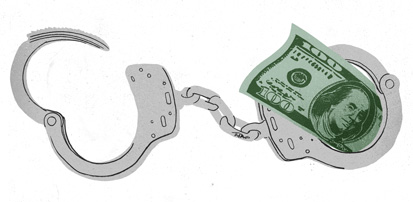Even the most flexible, forward-thinking government can run into roadblocks not of its own making. Numerous local government sources said unfunded state and federal mandates often prevent cities, counties and school districts from cutting costs and becoming more efficient.
Don’t believe it? Here’s a simple example, born of tradition: Many states still require local governments to post meetings and other official news in a printed newspaper, when web posting is readily available, free and arguably more accessible to the public.
New unfunded mandates show up every year. In Minnesota K-12 schools, the state has mandated new personnel evaluations that are “very prescriptive in statute,” said Gary Amoroso, executive director of the Minnesota Association of School Administrators. The new evaluations will go into effect for principals this year and for all teachers next year, none of which comes with any implementation dollars. “Nobody is arguing with accountability. The challenge is, where are the funds and time [for evaluations] going to come from?” said Amoroso. State legislators, he said, “don’t want to have unfunded mandates. But they keep coming out.”
Many mandates are minor, but others not so much. The Minnesota Inter-County Association (MICA) is a coalition of 12 large Minnesota counties (but does not include Hennepin or Ramsey). In its platform for the 2012 legislative session, it said that “relief from unfunded mandates … has been a recurring desire of counties.” Of particular importance is relief from so-called maintenance of effort requirements, “where the state literally tells counties how much they must spend for certain programs and sanctions them if they do not.”
The state also requires that counties share in the costs of certain state-mandated programs. In 2011, the Legislature raised counties’ share of new sex offender civil commitment costs from 10 percent to 25 percent and counties’ share of chemical dependency treatment costs from 17 percent to 23 percent.
Combined, MICA said these two mandates alone required some $430 million in annual county spending and should be repealed given “the Legislature’s emphasis on living within existing resources without raising taxes. … The Legislature cannot have it both ways. Either give counties the legal authority to actually reduce their expenditures or stop criticizing them when they increase expenditures and the property taxes to support them to meet the requirements of state law.”
States are often cognizant of the problem and have sought input on reforms from local governments. The Minnesota Office of the State Auditor now has a repository of several hundred reform suggestions from towns, cities, counties and schools.
But the task of reform is complicated. “There is a lot of talk about mandate relief,” said Jeff Spartz, executive director of the Association of Minnesota Counties. But mandates are often so entangled in both federal and state requirements “that [state] legislators just throw up their hands.” One example is a recent effort to simplify the application for state-based medical assistance, which is administered by counties. In Nebraska, a person must fill out a two-page application, Spartz said. In Minnesota, the application ran 21 pages, much of it filled with questions (for data-gathering purposes) or resource information for the benefit of applicants. Efforts to simplify the application winnowed it to “just 17 pages,” according to Spartz.
States have also bent to voters’ discontent over rising taxes by capping local revenue increases, along with property assessments, tax rates and levies—or sometimes all of the above (see table). In years past, this has been less of a problem; cities, counties and schools depend on modest (or better) increases merely from the appreciation of property values. But with stagnant or falling property values, other caps can mean local governments are forced to lower budgets without the ability to also shed service requirements.
| State caps on local revenue and property taxes | ||||
| Local revenue limits | Property tax levy limits | Property tax rate limits | Property assessment limits | |
| MI | X | X | X | X |
|---|---|---|---|---|
| MN | X | X | X | |
| MT | X | X | X | |
| ND | X | X | ||
| SD | X | X | ||
| WI | X | X | X | |
Source: Pew Charitable Trusts, "The Local Squeeze," June 2012 |
||||
South Dakota has been under a tax freeze since 1997 that limits revenue growth at the rate of inflation plus an adjustment for new construction, according to Diane Worrall, executive director of the South Dakota Association of Towns and Townships. If a town wants to increase its property tax revenue, it must go through an opt-out process that requires voter approval. That affords some flexibility, and many cities, counties and school districts in the state have chosen this opt-out feature.
But, Worrall said, “there have been very few townships that have opted out—guessing, I would say no more than 20 percent.” Part of the reason is that towns also face a property tax (or “millage” rate) cap of just 3 mils, so “most opt-outs for townships don’t generate much revenue.”
Ron Wirtz is a Minneapolis Fed regional outreach director. Ron tracks current business conditions, with a focus on employment and wages, construction, real estate, consumer spending, and tourism. In this role, he networks with businesses in the Bank’s six-state region and gives frequent speeches on economic conditions. Follow him on Twitter @RonWirtz.






